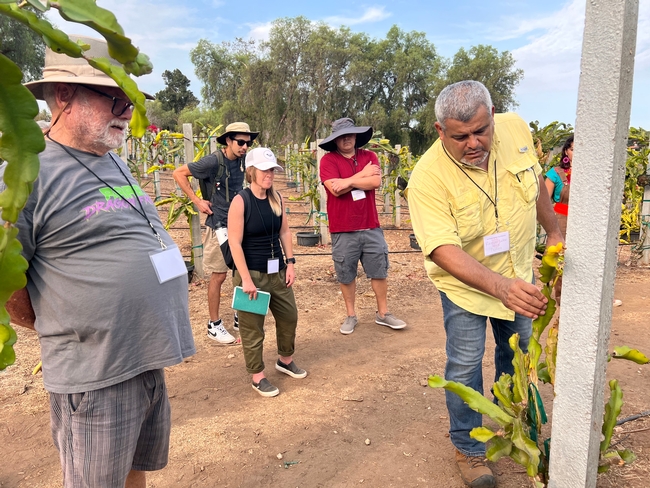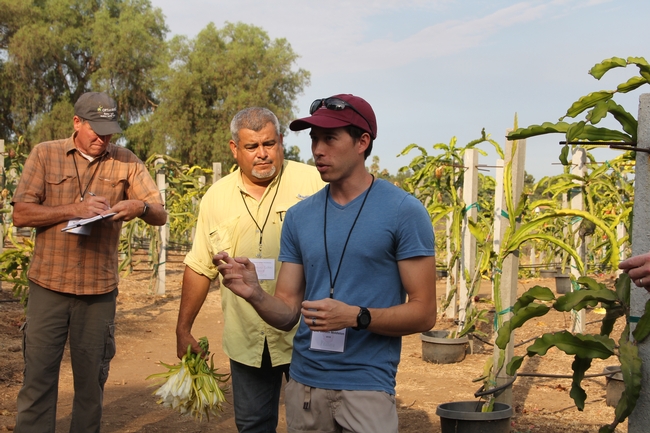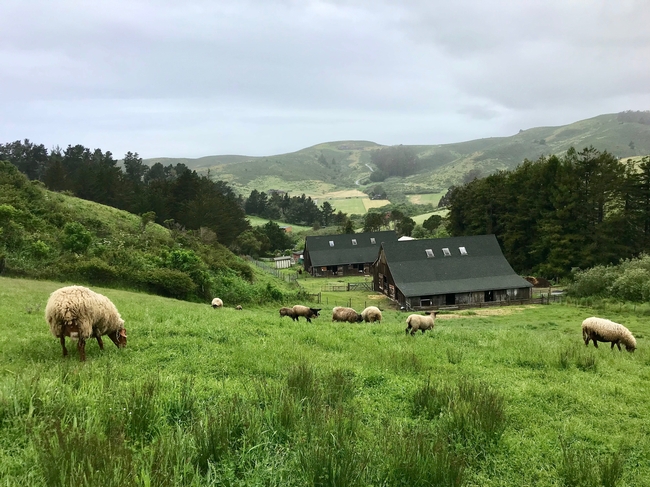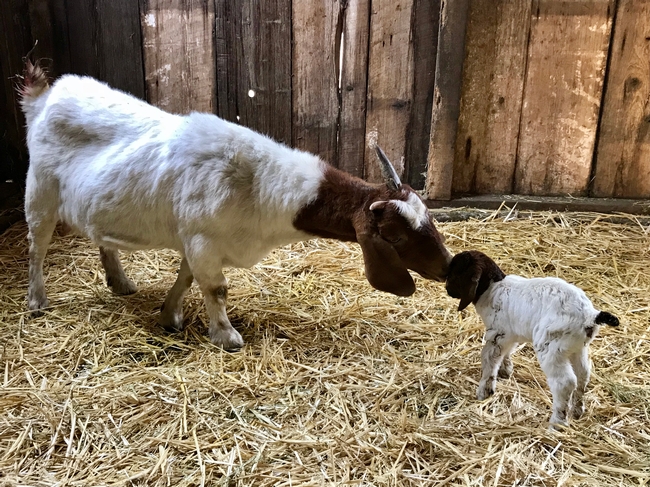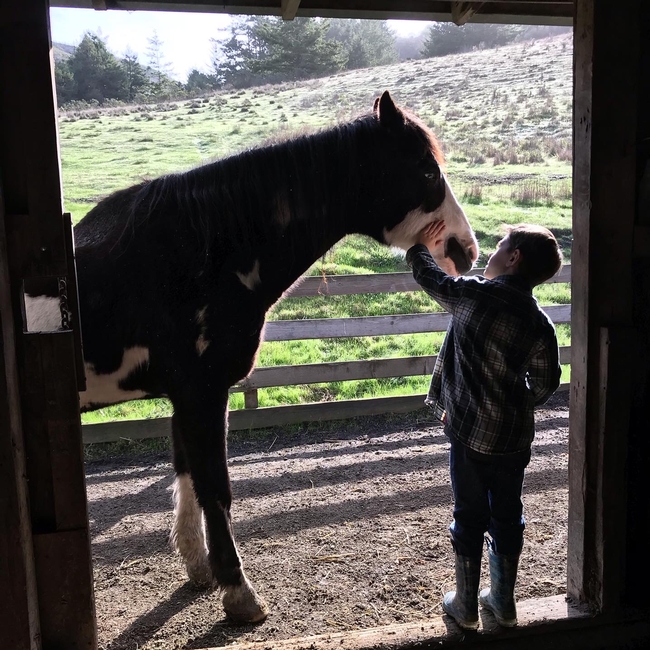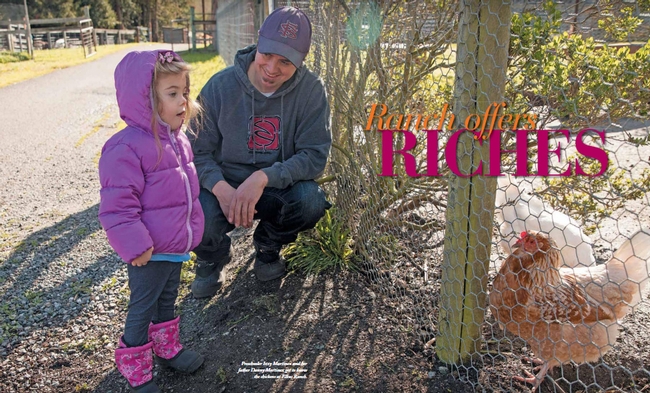
Posts Tagged: ranch
Pitahaya/dragon fruit growers gather to learn from UCCE research and each other
Once you know what a dragon fruit looks like, you will never forget it. The bright red, sometimes yellow or purple, scaly skin makes for a dramatic appearance. One that will surely leave an impression. The flesh ranges from white to a deep pink and the flavor is often described as having hints of kiwi, watermelon, or pear.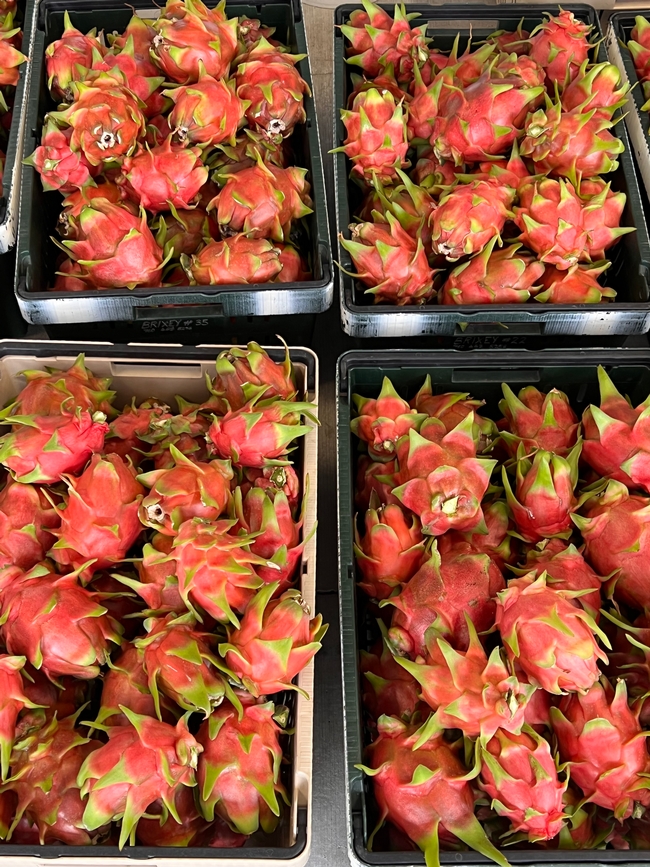
Since 2007, the Pitahaya/Dragon Fruit Production Tour, has united dragon fruit growers of all levels and backgrounds. After a two-year hiatus due to the pandemic, registration for the 2022 tour filled up in less than 24 hours.
A group of 60 participants gathered Sept. 8 at the Wallace Ranch Dragon Fruit Farm in Bonsall to learn the latest research on growing the drought-tolerant specialty crop. Ramiro Lobo, a small farms and agricultural economics advisor for UC Cooperative Extension in San Diego County, introduced dragon fruit growers and other UC scientists.
“I can't remember a year where this event was not sold out. So, the need and demand is there,” said Eyal Givon, a long-time participant and dragon fruit grower.
The tour not only demonstrates how to grow the fruit, but it also grants participants access to plant material for varieties that are unavailable elsewhere.
“We have given out about 50,000 cuttings through our festival and some varieties were unique to us because we introduced them to the U.S.,” said Lobo.
During their time at Wallace Ranch, participants heard from the farm's owner, Neva Day, regarding the growing practices that have shaped her success today. Day has been growing organic dragon fruit since 2013 and has well over 5,000 plants on the ground and more than 20 varieties.
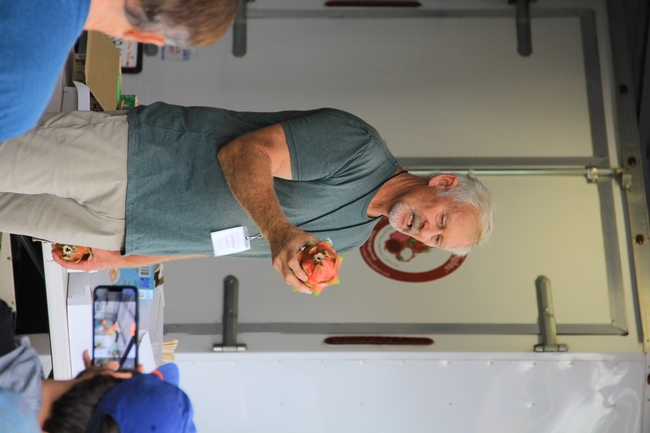
According to Middleton, Pecan Sandies are a balanced source of fat, protein, and sugar, making them excellent bait for the sugar-loving insects.
Participants eventually made their way to Dragon Delights Farm located in Ramona. Kevin Brixey, the farm's owner, has been growing organic dragon fruit for six years.
Although Brixey was hosting this year's tour participants, he used to be one of them.
“I attended the Pitahaya Festival in 2014 and that's where I realized dragon fruit was something I could grow. There was a lot of good information being shared and a connection to other growers, so it was a major steppingstone for me,” he says.
Unlike traditional dragon fruit growers, Brixey uses shade to grow his dragon fruit after learning about the method from another grower.
“I was impressed. I liked how the fruit performed under shade and now I use it as a management tool,” Brixey explained. In Inland Valleys, shade can shield fruit from intense sunlight and protect them from unwanted guests that eat the fruit, such as birds. 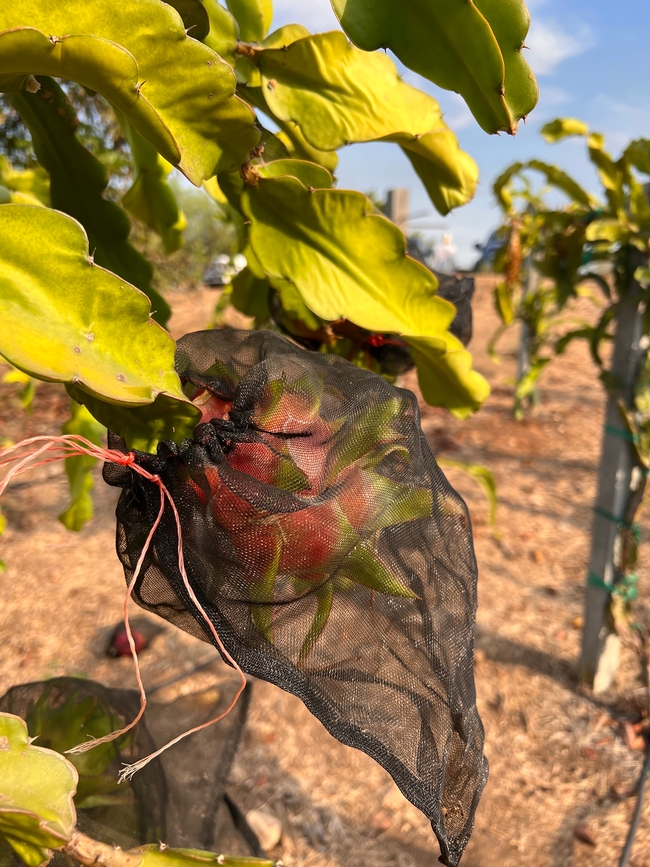
At the Farm Bureau of San Diego County offices, participants learned about the history of dragon fruit growing in California, food safety, pest management, best production practices and much more.
The presenters included experts like Paul Erickson from Rare Dragon Fruit, Lobo, Middleton, Johanna del Castillo from UC Davis Department of Plant Pathology and Ariana Reyes, a community education specialist from UCCE San Diego.
When reflecting on his time participating in the production tour, Givon, who has been growing dragon fruit for about 20 years and manages a 20-acre farm in Moorpark, said he enjoys reconnecting with other growers the most.
“What others are doing, might be better than what I'm doing,” Givon said. “Or what I'm doing, could be better than what someone else is doing. This time together is good for us to learn from each other.”
Lobo agreed with Givon and added, “I hope that these tours become self-sustained, and that we go back to a research field day at Southcoast REC with regional tours in San Diego and Ventura as we did before, or any other counties.”
The Pitahaya/Dragon Fruit Production Tour is an annual event hosted by UCCE San Diego. To learn more about UCCE San Diego events, visit https://cesandiego.ucanr.edu.
Private, educational family tours offered at UC Elkus Ranch
Homeschooling families are invited to venture out to a new learning environment at UC Elkus Ranch in Half Moon Bay. UC Elkus Ranch is an environmental education center, providing unique hands-on learning experiences for Bay Area youth. Due to COVID-19 precautions, UC Elkus Ranch has temporarily opened to the general public for private family tours only.
UC Cooperative Extension educators lead small groups on a remote-learning walk through the pastoral fields, vegetable gardens, historic barns and animal pens at UC Elkus Ranch.
“Families can feed our sheep while learning about wool processing, hear how predators and prey adapt, view our impressive animal bone collection, take selfies with our goats and miniature donkeys, and plant a seedling to take home,” said Frank McPherson, director of UC Cooperative Extension for the Bay Area.
Tours must be scheduled in advance and all statewide and San Mateo County Health Department restrictions are being enforced. Current information on San Mateo County health restrictions can be found at https://www.smchealth.org/health-officer-orders-and-statements. For information on scheduling and pricing, please visit http://elkusranch.ucanr.edu/Visit/Family_Tours.
Elkus Ranch, property of the University of California, conducts educational outdoor programs for urban, disabled and inner-city youth in environmental science, California history, animal care and agricultural programs year-round.
Located on the central California coast in Half Moon Bay, the ranch offers diverse programs including those specifically designed for students with special needs, allowing participants to learn about the inter-relationship of the environment and themselves in a rural setting. Under normal circumstances,Elkus Ranch hosts more than 9,000 youth and adults each year from all over the San Francisco Bay Area including Alameda, Contra Costa, Marin, Santa Clara, San Francisco and San Mateo counties.
Elkus Ranch also has a conference center that can be leased separately. The 4,400 square foot educational and conference facility is available for daytime retreats, meetings and workshops year-around. Current COVID-19 restrictions may affect availability. Additional information about the ranch and conference center, can be found at http://elkusranch.ucanr.edu/Visit/Conference_Center.
For more information about Elkus Ranch, please visit http://elkusranch.ucanr.edu or contact Leslie Jensen at LKJensen@ucanr.edu or (650) 712-3151.
Check Out the Open Farm Day in Vacaville on Saturday, Aug. 4
What's life like on the farm? If you're looking for something to do on Saturday, Aug. 4, the Pleasants Valley Agriculture Association (PVAA) of Vacaville is hosting its first-ever Open Farm Day 9 a.m. to 5 p.m. The event, free admission and open to the public, is an opportunity for small farm...
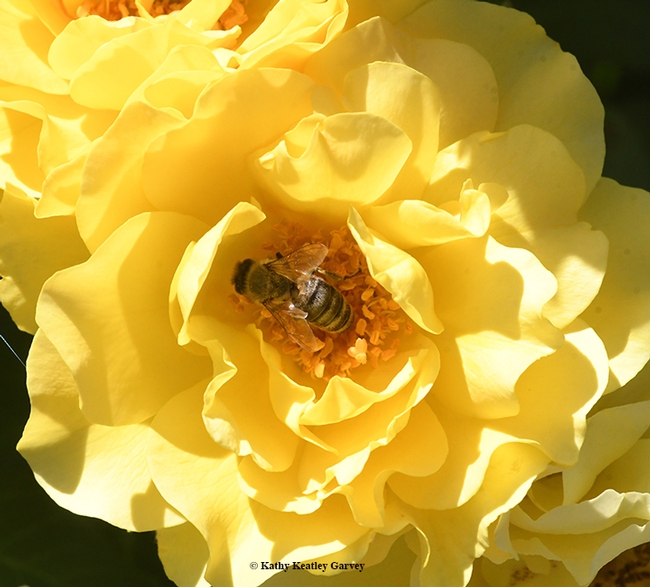
You're likely to see lots of bees at the Open Farm Tour, especially in the Morningsun Herb Farm nursery. (Photo by Kathy Keatley Garvey)
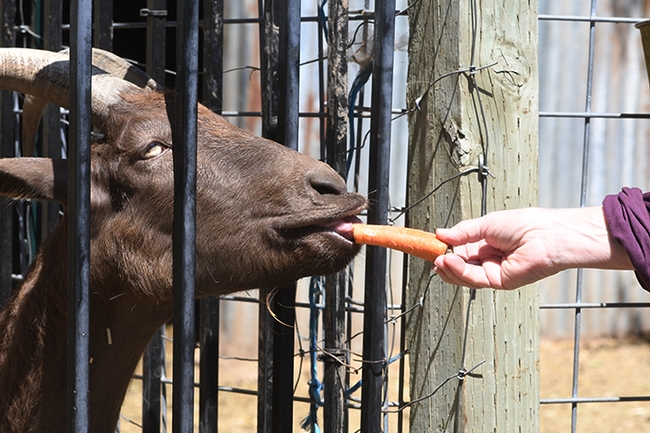
A goat at the Morningsun Herb Farm readily accepts a carrot. (Photo by Kathy Keatley Garvey)
Working on the Business
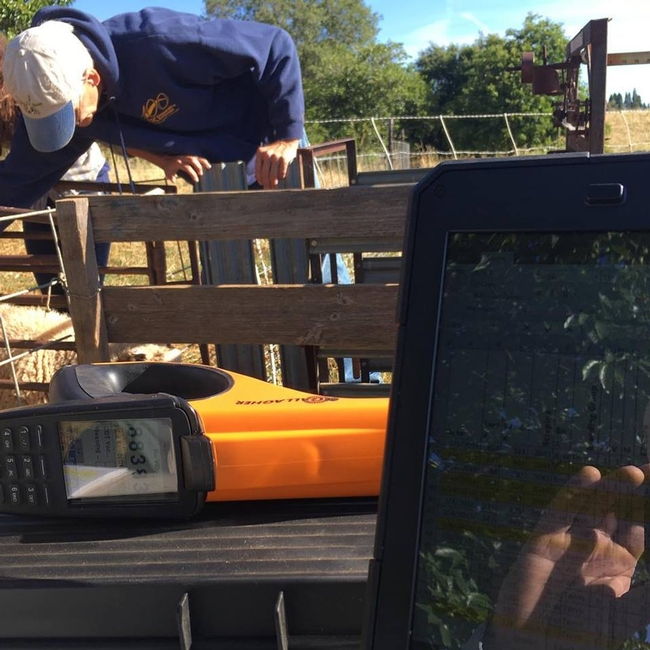
If you're an alumnus of our Farm Business Planning Short Course, you'll be familiar with the acronyms WOTB and WITB (coined by the Ranching for Profit school). Most of us who farm or ranch prefer WITB - Working in the Business. These are tasks like transplanting tomatoes, moving sheep, or pruning apple trees. WITB, for most of us, is the kind of work that drew us to farming or ranching in the first place. WOTB - Working on the Business - often seems dull by comparison. WOTB includes activities like business planning, developing new markets, or succession planning. WOTB often involves sitting at our computers or (heaven forbid) talking to our partners or families about the farm or ranch.
Despite my dislike of WOTB work, I find that working on the business is crucial to my ranch business' success. Intentionally carving out time each month for WOTB work helps make sure I don't neglect this important work. One of the speakers at the Sheep Industry Innovators Conference offered a new insight to one of the most critical pieces of WOTB work - updating our business plans.
Steve Elliott, Global Minerals Manager for a firm called Alltech, suggested that all businesses (not just farms and ranchers, but perhaps most importantly so) should ask four questions on an annual basis:
- Where are we now?
- Where have we come from?
- Where do we want to go?
- How will we get there?
For me, these questions offer a simple, well-structured approach to evaluating our businesses. They help place questions about new production systems, marketing strategies, and capital purchases in the context of our long-term business goals. We'll be using these questions this fall when we analyze our own sheep ranching enterprise.
Mr. Elliott also talked about the difference between innovation and disruption - high-tech terms that I had never thought much about in a small-farm context. Innovation, he said, is doing something new that improves on the old way of doing things. Disruption, on the other hand, is doing something new that makes the old way obsolete. I'm still thinking on this concept - what are the new approaches or new technologies that will disrupt your approach to farming or ranching?
Finally, Mr. Elliott suggested that our creativity is improved when we slow down. I know that for me, a quiet walk is good for my body and my mind. I often think more clearly about difficult problems when I'm away from my desk. This fall, when we focus on our WOTB work for our sheep operation, I'm going to suggest that we take a walk - I suspect we'll be more creative without the distractions of emails, cell phones, or even sheep work!
My point to all of this is to remind us all about the importance of stepping back and working on (rather than in) our businesses. I raise sheep because I love the day-to-day work. I'll only get to continue raising sheep if I pay attention to the needs of my business.
UC ANR's Elkus Ranch is an outdoor classroom for local youth
Each year, about 9,000 kids visit the UC Agriculture and Natural Resources Elkus Ranch in Half Moon Bay for hands-on educational experiences in urban horticulture, nutrition, food safety, pest management, livestock management and food preservation, reported Sara Hayden in April 2018 issue of Half Moon Bay Magazine (the article begins on p. 16).
Hayden visited the ranch with photographer Jaime Soja when a group of preschoolers descended to explore the garden and meet the farm animals.
"They can taste and touch and smell things - feel the wool of a sheep or an egg, know where their food is from, where the clothing fiber comes from," said Kathi Baxter, UC Cooperative Extension environmental science educator at Elkus Ranch. "Ideally, kids would get the idea that space is necessary to grow food. We're hoping to plant that seed of stewardship here."
The Elkus family donated the 125-acre ranch in the 1970s as a gift for youth. The ranch's operating budget depends heavily on grants and donations.
For more, visit the Elkus Ranch website at http://ucanr.edu/sites/elkus_ranch.

